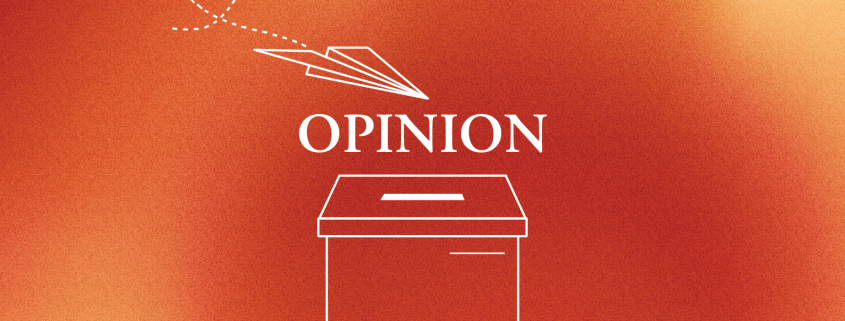Letter to the Editor: Art world elitism starts in the classroom
It’s the 10-year anniversary of the final addition to USC’s six art schools. In 2012, the Glorya Kaufman School of Dance joined the School of Architecture, Roski School of Art and Design, School of Cinematic Arts, School of Dramatic Arts and Thornton School of Music to round out USC’s art colleges. The collection of programs ranked 84 — out of 600 — globally for best universities to pursue an arts and humanities degree in 2022, according to independent data site Times Higher Education.
This collection of schools sponsors a University-wide arts initiative: Visions and Voices. The program provides a transformative space and series of events for all USC students to experience. Launched in 2006, Visions and Voices prides itself on connecting individuals “regardless of their major” in various art programs and with USC’s art schools.
The irony of this initiative and the language they’ve chosen is that it couldn’t be further from the truth.
I’m a graduate student pursuing a Masters of Arts specialized in arts journalism at the Annenberg School for Communication and Journalism. My one-year degree program is listed on USC Arts’ homepage in small writing; with one hyperlink at the bottom right corner. To graduate, it’s required to enroll in 9 to 14 elective units through two USC art schools. This degree path is all but explicitly regarded as an arts program at USC.
Why, then, was it so difficult to enroll in an art class as an “outside” student?
I was forced to shift my schedule around in week one of the fall semester, leaving me down an elective I needed to replace immediately. The perfect class was through Roski: It fit my schedule, my interests and had eight spots open for students to enroll.
But what followed were three strikes that displayed the inaccessibility of art classes for non-arts majors. Strike one was when I emailed the professor about the class curriculum only to be told that only students could view the syllabus.
I then reached out to Roski’s advising team for help enrolling in the course only to CC the same professor. Strike two was being referred to as a “non-Roski” student twice, with that provided as the reason they wouldn’t allow me in the class.
“May I ask why you are only allowing ‘Roski’ students in this class?” I wrote back in an email. “I’m not understanding why a willing student paying for their designed education wouldn’t be allowed to take this course.”
Strike three was when they came back with a new reason for not letting me enroll: The class was at capacity, to which I sent a screengrab of the eight open spots listed on Web Registration to the department head.
They let me in after that, but it shouldn’t have been that hard. And still, no one told me why only Roski students were welcome to enroll in the class.
I have colleagues who’ve also experienced their own form of chauvinism through USC’s art schools. Everything from not affording roles to outside majors in school performances through the School of Dramatic Arts to Thornton School of Music professors boasting a sarcastic, if not outright rude, demeanor to students from different degrees enrolled in their courses.
We’re not the first students who have been “othered” by USC’s art schools, and we won’t be the last, not if these departments maintain an elitist attitude that perceives non-majors as lesser artists and outsiders who don’t belong in the art classroom. Not only does this send the message that “non-artists” aren’t welcome in the community, but that they’re not even welcome to learn how to be a part of the community.
This sort of separatism starts in academia, but it can also end there.
The arts are a discipline that has long faced judgment and harsh critiques from outsiders who view the creative practice as gratuitous, but oftentimes people turn away from a subject due to a lack of understanding. This cycle is perpetuated when artists who are on the inside turn their noses up at the ones who don’t understand instead of finding ways to reach out and meet them where they’re at. And the ones at fault for perpetuating this dynamic are institutions like USC.
Art industries are facing monumental issues in equity and accessibility — an issue that deserves an article of its own — but conversations of elitism and accessibility aside, USC students pay upwards of $40,000 a semester to attend on a full-time schedule. The least the school could do is allow us to pay for classes we want to take.
Viktoria Capek is an M.A. arts journalism student at the USC Annenberg School for Communication and Journalism.

